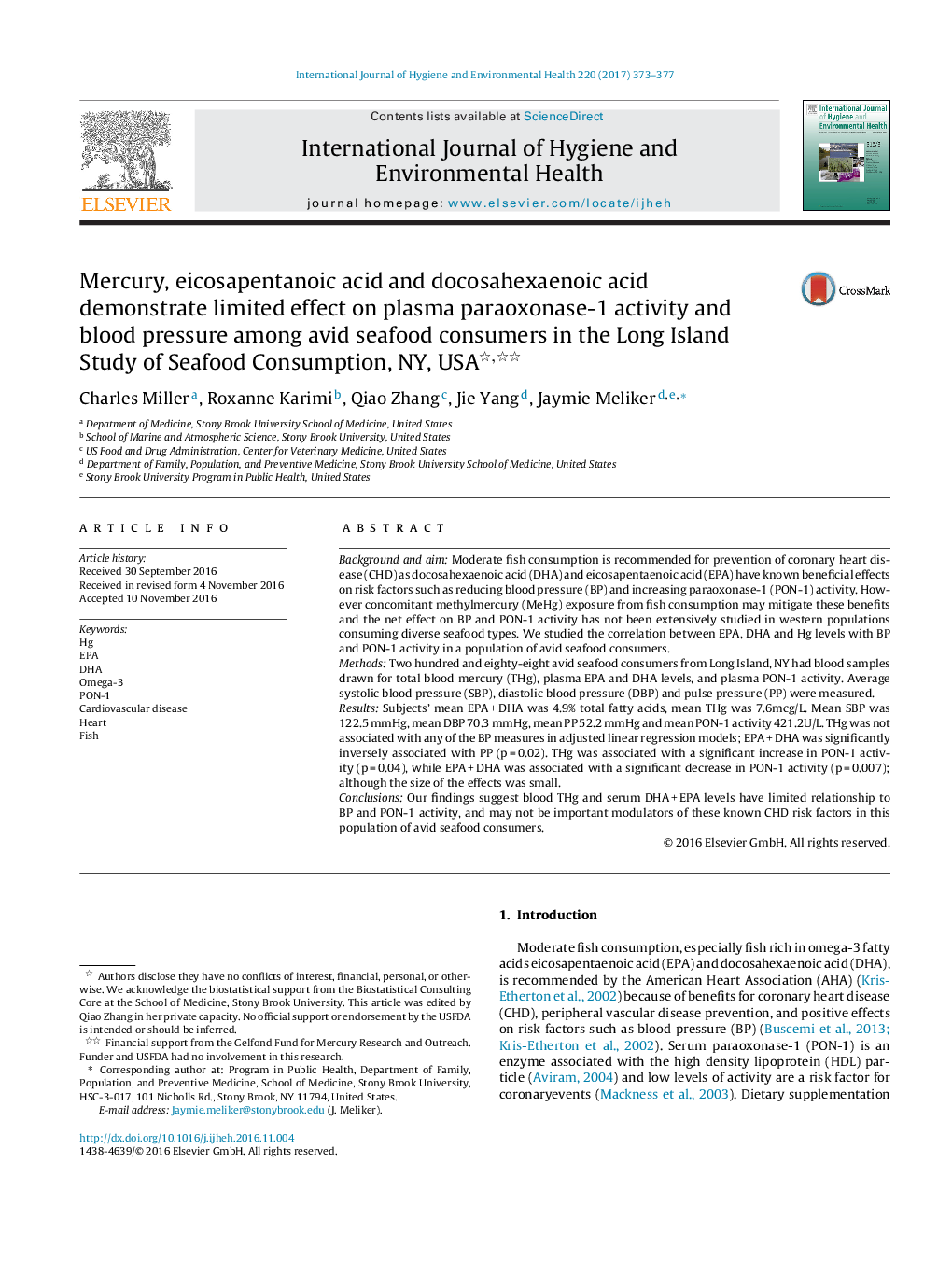| کد مقاله | کد نشریه | سال انتشار | مقاله انگلیسی | نسخه تمام متن |
|---|---|---|---|---|
| 5560496 | 1561875 | 2017 | 5 صفحه PDF | دانلود رایگان |
Background and aimModerate fish consumption is recommended for prevention of coronary heart disease (CHD) as docosahexaenoic acid (DHA) and eicosapentaenoic acid (EPA) have known beneficial effects on risk factors such as reducing blood pressure (BP) and increasing paraoxonase-1 (PON-1) activity. However concomitant methylmercury (MeHg) exposure from fish consumption may mitigate these benefits and the net effect on BP and PON-1 activity has not been extensively studied in western populations consuming diverse seafood types. We studied the correlation between EPA, DHA and Hg levels with BP and PON-1 activity in a population of avid seafood consumers.MethodsTwo hundred and eighty-eight avid seafood consumers from Long Island, NY had blood samples drawn for total blood mercury (THg), plasma EPA and DHA levels, and plasma PON-1 activity. Average systolic blood pressure (SBP), diastolic blood pressure (DBP) and pulse pressure (PP) were measured.ResultsSubjects' mean EPA + DHA was 4.9% total fatty acids, mean THg was 7.6mcg/L. Mean SBP was 122.5 mmHg, mean DBP 70.3 mmHg, mean PP 52.2 mmHg and mean PON-1 activity 421.2U/L. THg was not associated with any of the BP measures in adjusted linear regression models; EPA + DHA was significantly inversely associated with PP (p = 0.02). THg was associated with a significant increase in PON-1 activity (p = 0.04), while EPA + DHA was associated with a significant decrease in PON-1 activity (p = 0.007); although the size of the effects was small.ConclusionsOur findings suggest blood THg and serum DHA + EPA levels have limited relationship to BP and PON-1 activity, and may not be important modulators of these known CHD risk factors in this population of avid seafood consumers.
Journal: International Journal of Hygiene and Environmental Health - Volume 220, Issue 2, Part B, April 2017, Pages 373-377
